Thank you for joining me.
In case you have just joined me, know that you can access all of my earlier creations by checking under ‘categories’ on the right hand side of this blog under “Labels”. Then, for your convenience, follow me here or on Facebook, You Tube, Pinterest, Twitter or Instagram.
Check out all my social media handles at the bottom of this blog
Oh, and may I add that the fastest way to find any of my blogs is via Pinterest.
All my blogs can be printed. Find the printer friendly (green) link on the right side of this blog. You can also hit Control P (or Command P for Mac) on your keyboard, and the blog will go directly to the connected printer.
Remember that you only print if absolutely essential. Save paper – Save Our Earth.
Do remember to add my blog URL when you make and show off your creation.
Just copy the link on the search bar above - that's the blog URL.
To purchase this or similar yarn online, click here to buy your yarns online via Amazon. While you will still pay the same, I may get paid by Amazon as well.
This is a free blog - so do pay it forward for me. Cheers.
Instructions : (Using U.S terminology)
Please note that I start all my rows with a ch 1, turning chain for ease.
Please check the top of this blog for easy video tutorials on all stitches used in today's pattern.
Please read through all my notes before you pick up your hook, so you know just where we're heading in our pattern.
In my patterns I work with the principle of stitch count and body measurement. This means that you need to work the stitch count in pattern, till you get the measurement (length and/or width) that you need for your project.
Quick analysis of what we’re going
to do here today.
This is a
lovely pattern using motifs.
So we’ll
make our first motif, measure it and then figure out how many one needs to fit
the person for whom this top is intended.
Simple, right.. so let’s get on with it.
MOTIF PATTERN
Single Crochet : Sc : yo, insert hk into st ; yo (2 lps on hk); yo, draw through both lps. One sc made. Check out the video at https://youtu.be/ghACqBpA-3k
Start with a magic circle and 16 sc in that circle. Join to the 1st
st.
You are now in the corner ch-4
sp, just where we need to be for the next round.
Double Crochet : dc : yo, insert hk into st ; yo (3 lps on hk);
[yo, draw through 2 lps] twice. One dc made.
Chainless start for Double Crochet : I dislike the ch-2 / ch – 3 start, and this is what I do to start my row of dc.
Round 1 : dc in the 1st sc ;
*ch 5, sk next sc ; dc in
the next dc* ;
rep *to* all around ;
ch 5 and join with a sl-st to the 1st
st.
Round 2 : sc in the 1st dc ;
(ch 3, 2 dc ; ch 5, 2 dc)
all in the same ch-5 sp ;
*ch 3, sc in the next dc ;
[ch 3, 2 dc ; ch 9, 2 dc]
all in the same ch-5 sp ;
ch 3, sc in the next dc ;
rep (to) in the next ch-5
sp* ;
rep *to* all around ;
ch 3 and join with a sl-st to the 1st
st.
Fasten off and weave in ends.
And just like that.. we’re done
with our first motif.. how easy and beautiful is this? Love it.
So let’s get calculations for
our top.
Measure this motif you’ve made,
and work out how many you’d need to work the width of your top.
For the next motifs, we will attach
in our following Round 2 and we will join-as-we-go with the ch-sps of Round 2.
Now in Round 2, we have a ch-5 sp and a ch-9
sp.
So let me write out the
instructions just for that round.
For all following Round 2, I
will label this round as Round 2 A
Round 2A : sc in the 1st
dc ;
(ch 3, 2 dc ;
ch 2, join to the ch-5 sp of earlier motif ;
ch 2, 2 dc) all
in the same ch-5 sp ;
*ch 3, sc in the next dc ;
[ch 3, 2 dc ; ch 4, join to
the ch-9 sp of earlier motif ;
ch 4, 2 dc] all in the same ch-5 sp ;
ch 3, sc in
the next dc ;
rep (to) in the next ch-5 sp* ;
rep *to* all around ;
ch 3 and
join with a sl-st to the 1st st.
So this is pretty and pretty
easy too, right.
So go ahead and join up your
motifs till you work the yoke part of your top.
Remember that you need to keep
an opening for the neck portion of the top.
There is a chart given for the
attachment of the motifs for the yoke, which is a great guide. Working along these lines, join the motifs
till you have your yoke worked out.
Once you’ve done the yoke part
of the top, we’ll work our way down the top to the base of our top.
We will start with a row /
round of dc.
Now we can either join our two
sides and work in a round, or we can work in rows, and one side at a time,
joining the sides at the end.
I will write the instructions
row-wise (as if we’re working sides separately) and you decide how you want to
work this out.
Part 2 : Lower part
of the top
In the following row, we will
be using only the ch-5 or ch-9 sps. Now
besides the corner ch-9 sps, all the other ch-9 sps are the ones that join two
motifs together. So it is that sc that
joins these two ch-9 sps that we will use.
Row 1 : ch 3, sc in the 1st corner ch-9 sp ;
ch 9, sc in
the next ch-5 sp ;
ch 9, sc in the next ch-9 sp-join ;
*ch 3, sc in the next
ch-9 sp-join ;
ch 9, sc in the next ch-5 sp ;
ch 9, sc in the next ch-9 sp-join*
;
rep *to* till end. Turn.
Row 2 : ch 3, dc in the 1st sc ;
*8 dc in the next ch-9
sp ; dc in the next sc* ;
rep *to* till end.
Turn.
From our next row on, we’ll
start with our “V”-st which is (dc ; ch 3, dc) all in the same st or ch-sp.
Row 3 : sk 1st 8 dc , ch 3, sk next 6 dc, “V”-st in the
next dc ;
*sk next 4 dc, ”V”-st in the next dc* ;
rep *to* till last 14 dc ,
ch
3, sk next 6 dc, sc in the next dc.
Turn.
In this row, we will work on
the 1st dc (or 1st leg) of the 1st “V”-st, so
when we say 1st dc, it’s that 1st leg of the 1st
“V”-st.
Row 4 : sk all sts till the 1st “V”-st , dc in
the 1st leg of the 1st “V”-st ; 3 dc in the ch-3 sp ; 1
dc in the next dc (which is the 2nd leg of the “V”-st) ;
*dc in the
next dc ;
3 dc in the next ch-3 sp ; dc in the next dc* ;
rep *to* till the
last “V”-st ;
dc in the last dc of the last “V”-st. Turn.
Row 5 : ch 3, sk next 6 dc, “V”-st in the next dc ;
*sk next 4 dc,
”V”-st in the next dc* ;
rep *to* till last 6 dc ;
ch 3, sk next 5 dc, sc in
the last dc. Turn.
Row 6 : sk all sts till the 1st “V”-st , dc in
the 1st leg of the 1st “V”-st ; 3 dc in the ch-3 sp ; 1
dc in the next dc (which is the 2nd leg of the “V”-st) ;
*dc in the
next dc ; 3 dc in the next ch-3 sp ; dc in the next dc* ;
rep *to* till the
last “V”-st ;
dc in the last dc of the last “V”-st. Turn.
The designer has not stopped
the decrease and is going to work in straight rows from the 1st dc.
Row 7 : dc in the 1st dc ; ch 1, dc in the same dc
;
*sk next 4 dc, ”V”-st in the next dc* ;
rep *to* till last 5 dc ;
ch 3, sk
next 4 dc, (dc ; ch 1, dc) all in the last dc.
Turn.
Row 8 : dc in the 1st
dc ;
dc in the next ch-1 sp ; dc in the next dc ;
3 dc in the ch-3 sp ; 1 dc in
the next dc (which is the 2nd leg of the “V”-st) ;
*dc in the next
dc ; 3 dc in the next ch-3 sp ; dc in the next dc* ;
rep *to* till the end.Turn.
Rep Rows 7 and 8 till your project
is of the length desired ; ending with a Row 8.
Now for our final row, you
could end like Row 8, or do a variation with picots. So in case you decide on the picots, then
every alternate dc will have a picot at the end of it. Simple enough, right?
We will use the 3-ch picot
which is (ch 3, sl-st in the 1st ch).
How to work a picot stitch : Traditionally for a ch-3 picot, you work (ch 3, sl-st in 3rd ch from hook). For a ch-5 picot, you will do (ch 5, sl-st in 5th ch from hook).
Fasten off and weave in ends.
Repeat all instructions of Part 2 for the other side of your top as well.
Finishing :
Fasten off and weave in
ends. Give yourself a big pat on the
back as this one has really been a great project – but totally worth it, I’m
sure you’ll agree.
And that’s done.. yet another
project brilliantly executed !
Enjoyed this ?? I sure did.. Come back right here for more freebie patterns
Remember to share this blog post when you share your photos with me on Facebook. I’d love to feature your photos on my FB page. Cheers.
If you're visiting me here for the first time, and have liked the experience, do add me to your mailing list (for your convenience) , and all my future free patterns will come straight to your mail box.
I’d appreciate if you could credit my blog (and link the original pattern link) when you make your own creation. Thanks.
Have a great day and see you soon.
I have a few tops already made, and just in case you want a dekho at some of those
free patterns … here you go
and a doll’s top..
and some bolero/jacket/vests that will look grand on a top..
I have a few girls dresses, and just in case you want a dekho at those free patterns … here you go
For cute hair embellishments and motifs check the links below.
..and some belts..
and here are a few skirt patterns that you can use your belt for..



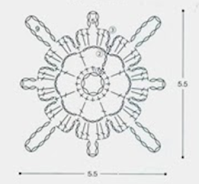

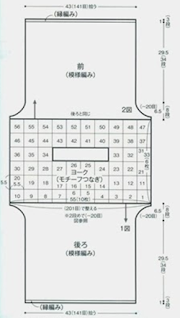

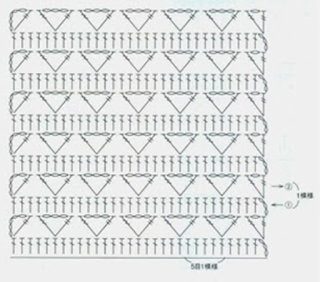

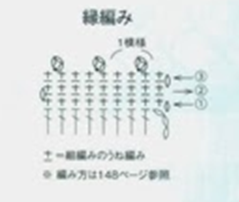












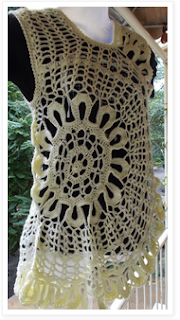
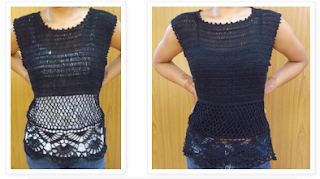





I am trying to find where I can add my name to your mailing list.
ReplyDeleteHi. Right on the top of the blog, right hand side is a space for following me on Facebook, finding me on Pinterest or following me on email. I am on Twitter, Instagram and Ravelry as well - so if you are any one of these social media, you can follow me via there and get notified every time I post a new blog. Adding your email id on that top link on this blog will also give you a notification when I post a blog. I try to post one a day - so if you book mark this blog URL on your browser, (by clicking on the STAR on the top right hand side of your search bar on your computer), you can then visit me daily and get the update :) Whatever works best for you. Thanks for your interest and have a wonderful day.
Delete